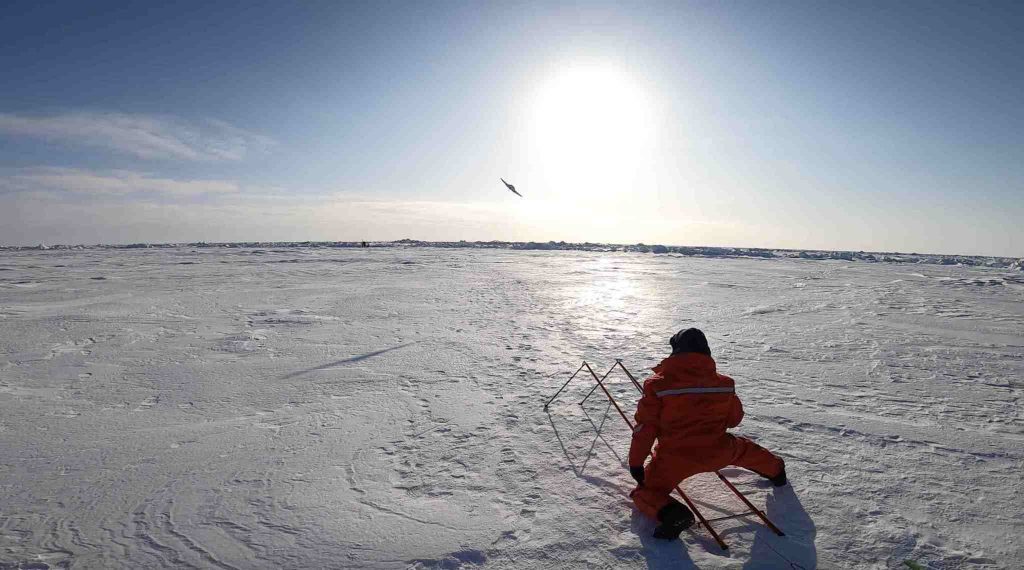by Matthew Shupe, CIRES/NOAA scientist and co-coordinator of MOSAiC
Another day of intense sun and this changes the surface in dramatic ways. The snow is melting fast. We’ve put down some boards to minimize melt near the tower, and these work, but the snow all around melts, leaving pillars with boards on top. The bare ice, formerly blue, becomes white as the outer layer melts. This is the layer that gets most of the energy from the sun and starts to degrade and melt. Over expansive surfaces the melt ponds continue to change. Deepening in places, and becoming connected by little rivers; drainage channels that carve out paths from pond to pond. The surface has actually become somewhat less wet and slushy, in spite of the blazing sun, because of the organization that’s happening with the water flow. There are a few holes in the ice, and these have also served as drainage for surface water. The melt is now making its way to the ocean. Some of the huge ponds have shrunk substantially. But now that this surface differentiation has occurred, we now know where we will have some challenges in moving across the ice floe.

In the past day I built a bridge that can support a snow machine and some ablation shields out of boards and white tarps to protect the snow. The bridge spans our biggest river on the road out to Met City. Only about 4 feet across right now, but a couple of feet deep, and too much of a span for a snow machine! The ablation shields have been installed around the Met Hut (and eventually the tower) to slow the melt process in those areas. Our longer term stability requires us to manage the melting ice as best we can.

